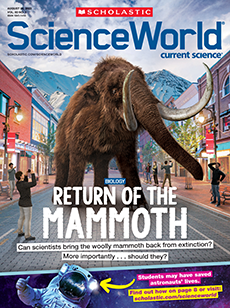When you imagine an apple, what does it look like? It’s probably round, red, and shiny. But in reality, most apples aren’t so picture-perfect. Many are off-color or lumpy. These apples are still good to eat—they just don’t look exactly “right.” Farms and grocery stores assume that people don’t want to buy misshapen or discolored produce. That’s why, every year, millions of pounds of fresh fruits and vegetables are thrown out before they even hit store shelves—simply because they are considered “ugly.”
Sometimes ugly produce is fed to livestock or used to create other products, like applesauce or apple juice. But most of the time, it’s sent to a landfill, where it rots. As it breaks down, it releases methane. This powerful greenhouse gas traps heat in Earth’s atmosphere, causing global average temperatures to rise. Producing food also requires a lot of resources. So when it’s tossed without being eaten, the energy used to grow it, harvest it, and transport it all goes to waste (see Why Food Is Wasted).
When you picture an apple, what does it look like? It’s probably round, red, and shiny. But really, most apples aren’t so picture-perfect. Many are off-color or lumpy. These apples are still good to eat. They just don’t look exactly “right.” Farms and grocery stores think that people won’t buy misshapen or discolored produce. So millions of pounds of fresh fruits and vegetables are thrown out every year, before they even reach store shelves. The reason? They are considered “ugly.”
Sometimes ugly produce is fed to livestock. Or it’s used in other products, like applesauce or apple juice. But usually, it’s sent to a landfill and rots. As it breaks down, it releases methane. This powerful greenhouse gas traps heat in Earth’s atmosphere. That causes global average temperatures to rise. Plus, a lot of resources are needed to produce food. Energy is used to grow, harvest, and transport it. When food is tossed without being eaten, all that energy goes to waste (see Why Food Is Wasted).

